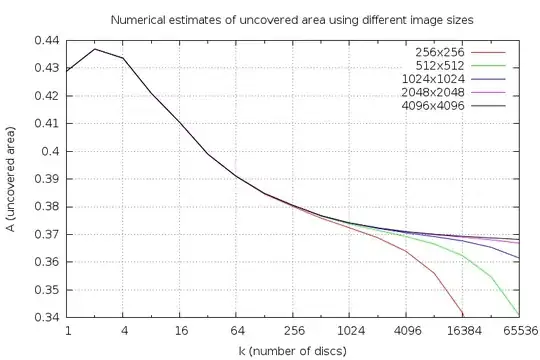1. Paint a $1\times 1$ square in blue.
2. Take $k$ points randomly and uniformly from the square.
3. Paint $k$ disks of area $1/k$ centered at each point in red.
What is the expected remaining blue area?
Remark: the sum of the areas of the disks is $k\cdot 1/k=1$, the same as the area of the square, but we have to account for:
- Disks intersecting each other.
- Disks intersecting the outside of the square.
